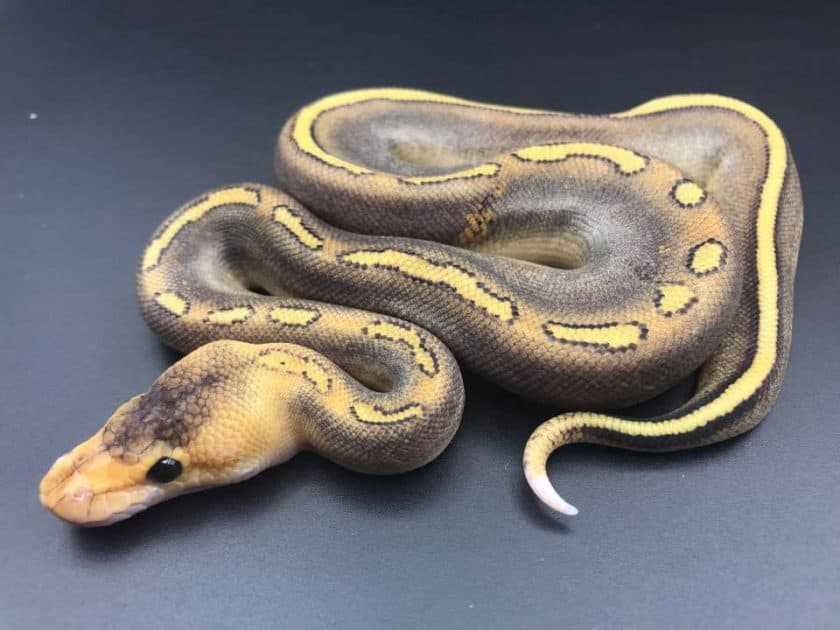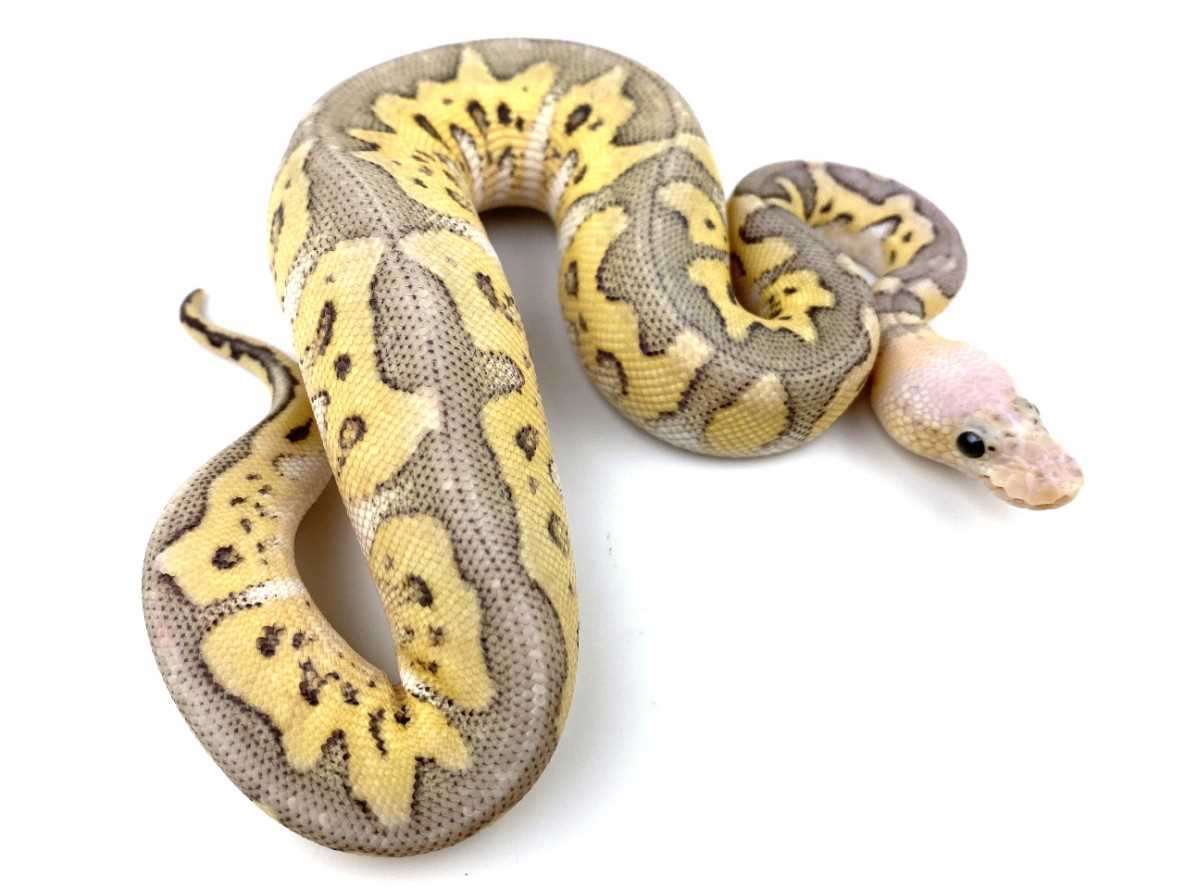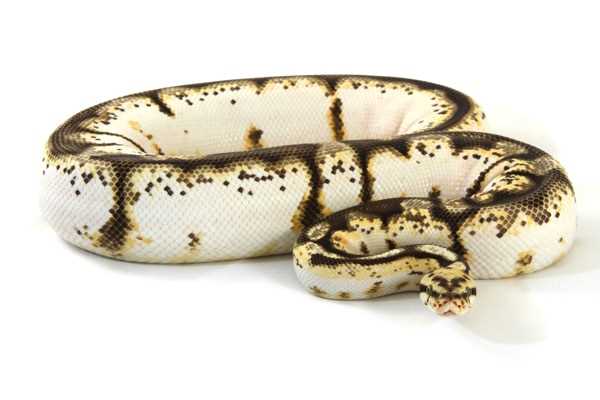
Welcome to the captivating world of ball python color variations! These mesmerizing creatures boast an extraordinary range of colors and patterns that are sure to leave you in awe. From bright and vibrant scales to subtle and intricate designs, ball pythons offer a stunning kaleidoscope of genetic diversity.
The Range of Ball Python Colors
One of the most fascinating aspects of ball python colors is their morphs. A morph refers to a genetic variation that alters the snake’s color, pattern, or scale appearance. With the advancement of breeding techniques, breeders have been able to create a multitude of color morphs, resulting in some truly breathtaking specimens.
Common Ball Python Color Morphs
There are several common ball python color morphs that are widely available in the pet trade. These include:
- Albino: Albino ball pythons lack the pigment melanin, resulting in a white or yellowish body with pink or orange undertones. Their bright colors make them highly sought after.
- Pastel: Pastel ball pythons have a lighter base color and increased brightness compared to normal wild-type specimens. They often exhibit a mixture of yellow, brown, and cream hues.
- Spider: Spider ball pythons have a distinctive pattern with elongated teardrop-shaped markings. They typically display a combination of black, white, and light brown colors.
- Pinstripe: Pinstripe ball pythons feature a unique pattern of thin, elongated stripes running along their body. Their base color can vary, but they often have a light appearance with vibrant striping.
Rare and Exclusive Ball Python Color Morphs
Some examples of rare and exclusive ball python color morphs include:
- Pied: Pied ball pythons display a striking pattern of white patches on a darker background. The amount and distribution of white can vary, creating unique and visually stunning individuals.
- Clown: Clown ball pythons have a pattern that resembles a clown’s face, with vibrant and contrasting colors. They often exhibit a bright yellow or orange base with bold markings.
- Lavender: Lavender ball pythons have a beautiful pale lavender or lilac coloration, making them highly sought after by collectors.
- Scaleless: Scaleless ball pythons lack the typical scales found on other snakes, giving them a unique and smooth appearance. They are extremely rare and prized for their novelty.
These are just a few examples of the wide range of ball python color morphs available. Whether you prefer the vibrant colors of the common morphs or the rarity of the exclusive morphs, there is a ball python coloration out there to suit every taste and preference.
Common Ball Python Color Morphs
One of the most common ball python color morphs is the albino morph. Albino ball pythons have a complete lack of pigmentation in their scales, resulting in a pale white or yellow coloration. Their eyes are typically red or pink, which adds to their unique appearance. The albino morph is highly sought after by snake enthusiasts and breeders due to its striking beauty.
Rare and Exclusive Ball Python Color Morphs
Another exclusive ball python color morph is the clown. These snakes have a unique pattern that resembles a clown’s face, hence their name. Clown ball pythons typically have a bright base color with intricate markings that create the clown-like pattern. This morph is known for its vibrant colors and distinct appearance, making it highly desirable among enthusiasts.
Lastly, the blue-eyed leucistic or BEL is an exclusive ball python morph that has a completely white or pale-colored body with blue eyes. This morph is the result of a combination of various genetic mutations, including leucism and lack of melanin production. BEL ball pythons are highly prized for their ethereal beauty and are often considered the pinnacle of ball python breeding.
Breeding these rare and exclusive ball python morphs requires extensive knowledge of genetics and careful selection of breeding pairs. The goal is to produce offspring that possess the desired color and pattern traits. With the right breeding program, it is possible to create even more unique and exclusive ball python color morphs that will continue to captivate enthusiasts.
Popular Ball Python Color Morphs
Albino

One of the most well-known and popular ball python morphs is the albino morph. Albino ball pythons lack the pigment melanin, which gives them their distinct yellow and white coloration. This color morph is highly prized for its vibrant and striking appearance.
Piebald
The piebald morph is another favorite among ball python enthusiasts. Piebald ball pythons display white patches or blocks of color on a base of dark scales. This unique pattern often resembles a piebald horse, hence the name. The contrast between the white and dark scales creates a visually stunning and eye-catching appearance.
Other popular ball python color morphs include the pastel morph, which enhances the natural colors of the snake and gives it a brighter and more saturated look. The spider morph, characterized by its intricate web-like pattern, is also highly sought after by collectors. The bumblebee morph combines the spider and pastel morphs to create a snake with a striking yellow and black coloration.
Each of these popular ball python color morphs has its own unique characteristics and appeal, making them highly desired by reptile enthusiasts. Whether you’re a breeder or a collector, exploring the world of ball python color morphs can bring endless excitement and fascination.
Care and Maintenance of Different Ball Python Color Variations
Genetics and Breeding

One of the most fascinating aspects of different ball python color variations is the genetics behind them. Each morph has a unique set of genetic traits that contribute to its specific coloration, pattern, and scale characteristics.
Additionally, it is crucial to ensure that the breeding process is done responsibly and ethically. This means only breeding ball pythons that are healthy and free from any genetic abnormalities or health issues that could be passed on to their offspring.
Enclosure Setup
The enclosure should have the correct temperature and humidity levels, as well as proper lighting and substrate. It should also include hiding spots, such as caves or branches, to allow the snake to feel secure. The size of the enclosure should be suitable for the size of the snake, with enough space for it to move around comfortably.
Feeding and Nutrition
Feeding ball pythons with different color variations follows the same principles as feeding regular ball pythons. These snakes are carnivorous and primarily eat mice or rats. The size of the prey should be appropriate for the size of the snake, and they should be fed on a regular schedule.
Healthcare and Monitoring
Regular healthcare and monitoring are essential for the well-being of ball pythons with different color variations. This includes regularly checking their overall health, observing their behavior, and addressing any signs of illness or distress promptly.
Additionally, it is recommended to have a veterinarian who specializes in reptiles to provide regular check-ups and address any health concerns that may arise.
Buying and Breeding Ball Python Color Variations
When buying a ball python for breeding purposes, it is crucial to source your snakes from reputable breeders. This ensures that you are getting healthy animals with accurate genetic information. Reputable breeders will provide lineage information and can answer any questions you may have about the breeding potential of a particular snake.

I’m Lena Adams—a product of an unconventional upbringing in the African wilderness. My father, a daring explorer of African wildlife, sparked my fascination with reptiles, a passion that intertwined with the tragic loss of my mother during an expedition, leaving an indelible mark on my life. Driven to understand the creatures that captivated my parents, I embarked on my journey, sharing insights about reptiles, frogs, and lizards on my website. Through my explorations and conservation efforts, I honour my family’s legacy while seeking connections—to the creatures, nature, and the mother whose presence I yearn to understand.
